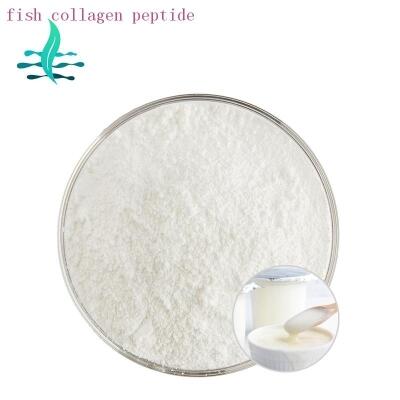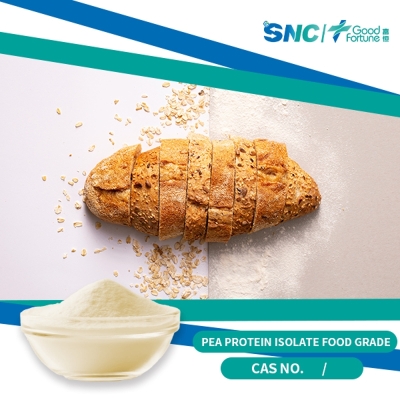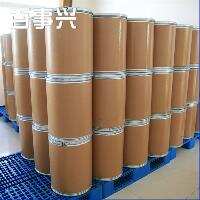Histaline - a restrictive amino acid?
-
Last Update: 2020-07-29
-
Source: Internet
-
Author: User
Search more information of high quality chemicals, good prices and reliable suppliers, visit
www.echemi.com
Fabio Giallongo Alexander NHristov's translator Wang Yongkang alvmethionine (Met) and Lysenine are the two most studied essential amino acids, and have been shown to limit the production of milk protein in cows fed North American dietHisanine is one of the other 10 essential amino acids that must be sufficientin in the amount of milk cow feedBut hisamcine is not like methionine and lysine, and there is no commercial product in the form of gastric protection (RP)alv1945 Nobel Prize winner in chemistry, Artturillmari Vitanen, first suggested the importance of histoline in cow nutritionIn a series of studies of lactating cows in the 1960s, Vitanen suggested that histine from the microbiome protein in the stomach was likely to limit the synthesis of milk proteinsaLvamino acid analysis of the total protein of the stomach contents of the bison, showed that histanine was the lowest concentration of all essential amino acidsVitanen also observed a decrease in hemoglobin in the blood and believes this is related to the lack of histaninesBlood blood protein contains about 8% of histaine, which is the endogenous source of histaineaLvstudies in recent years in the post-gastric injection of histaine tumors in northern Europe show editing that histalyins are the most limited amino acids in the production of milk and milk protein, and that hisamcine begins to get more attention in the silage of grass-based grass silage and concentrate feed containing barley/oats and beet/citrus meal, as well as in cows fed with or without feather powderaLva recent study conducted at Pennsylvania State University, the lactating cow was fed a protein-reduced, usually based on North American feed feed ingredients (corn silage, radon semi-dry silage, corn grains, and protein supplements with whole soybeans and double-low-lying), indicating that hisamate is a restrictive amino acidALv these conditions, similar to those observed in the above-mentioned European studies, the gastric microbiome protein provides most of the amino acids needed for milk protein synthesis, and hisalynine can be a restrictive amino acid for high-yielding cows aLv this is due to data from the NRC (2001) and data from Pennsylvania, which clearly show that histine concentrations are lower in the protein of the tumor (2% crude protein base) compared to methionine (2.4%) or histine concentrationins in milk proteins (2.7%) ALv is commonly used in north American dairy feed forage, but also has a lower histine content (1.8% corn silage, 1.7% of the radon semi-dry silage, 1.9% of the grasshopper hay), while the concentration of histine in most plant-based feed is similar to milk protein (3.1% corn, soybean meal and double-low vegetable meal 2.8%) in the first Pennsylvania trial with 48 Holstein cows, the alv fed a protein-reduced feed (13.6% coarse protein) and reduced dry matter intake (DMI), milk production, and milk protein production compared to feed that met the amount of protein needed for cows to metabolize protein (15.7% coarse protein) ALv in response to these negative effects, we supplement edited protein-reduced feed with tumor stomach protection lysine and tumor stomach-protecting methionine Compared with the feed of the right protein, this strategy increases the milk protein yield and reduces the gap between dry substance yield and milk yield Since then, with the use of tumor gastric protection lysine, tumor stomach protection methionine and an experimental tumor gastric protective histine, supplemented with reduced protein feeding, further improve DMI, milk yield and plasma histine, to close to the level of feeding protein suitable feeding food ALv the purpose of the second trial to assess the role of the supplementary eupurio, pheromone-protected methionine and tumor-stomach-protecting histine in protein-reduced feed (14.8% crude protein) In this experiment, the protein reduction in feed did not affect DMI, milk yield and milk composition (because the coarse protein of the feed was reduced less) aLv however fed protein-reduced feeding cows, compared to the cattle fed protein suitable for feeding (16.7% crude protein), and feeding protein to reduce feeding and supplemented with slow-release urea (15.8% crude protein) and tumor stomach-protected methionine or tumor-protected pythnonine samplyne, its body weight less weight Cows increased their DMI, milk protein content and yield when the tumor-protected histanine was added to the tumor stomach to protect methionine and slow-release urea aLv the trial concluded that hisaline added to protein-reduced feeding foods had a positive effect on lactatary cows to improve DMI, which was consistent with the first study In the same study, aLv we collected muscle tissue from 45 cows to analyze key genes in protein synthesis and skeletal muscle decomposition metabolism, and to assess the effect of feeding on gene expression aLv We have observed that cows that receive or feed with protein to reduce feeding have more products of gene expression (key proteins and messenger RNA), suggesting that there is a larger amount of protein conversion in muscle tissue, consistent with the lower body weight gain observed in the main experiments ALv supplements histine, which reduces a large number of key proteins (P-mTOR) in muscle tissue, which means that histaly is most likely to be used by the breast for the synthesis of milk proteins rather than muscle proteins The results were also consistent with the increase in milk protein content and yield observed in the addition of gastric protective histine to protein searlyie In another study, aLv fed cows that were protein-reduced (14.5% coarse protein), compared to cows fed with protein-appropriate feed (16.5% crude protein), with lower DMI, milk yield and milk components (fats and proteins), and plasma histoline Cows fed to protein-reducing feed also had lower blood hemoglobin, which our calculations calculated provided 0.4 grams of histine per day during the experiment aLv supplementing the tumor stomach protected lysine increases the milk protein content in the food with reduced protein, while the addition of tumor-protected methine does not affect the production performance of the cow The use of tumor-protected histine to supplement the reduced feed of the protein increased DMI (to the level of protein suitable for feeding), milk protein content, and numerical increase in milk fat and protein production It also prevents the reduction of plasma histine and blood hemoglobin observed in feeding protein-reducing cows aLv combined with three tumor-protected amino acids (Rai, egg and histaline) to supplement the reduced feed, increasing the production of milk fat and protein, bringing it close to the level observed in protein-friendly feeding The data for this study confirm and confirm previous findings that histaline promotes DMI, and that the combination of the three tumor-protected amino acids (li, egg and histaline) can further increase the milk production of feeding cows fed protein The purpose of the final experiment of the alv was to provide the appropriate amount of protein (16.2% crude protein), methionine and lysine, the effect on lactation properties of cows, and the storage of endogenous histine (hemoglobin in the blood and creatine in the muscles) Compared to the appropriate feeding grain of histaine, the cows fed to histaline lack feeding have lower DMI, milk yield, protein and energy-corrected milk ALv histache in the lack of feed also reduced plasma histine and blood hemoglobin (indicating 0.7 grams of histine per day from this endogenous storage), but did not reduce carnosine in the muscles This observation suggests that hemoglobin appears to play a more important role in supplying histine during histaine deficiency than muscle carnosine, but has not yet slowed the extent to which histalyse deficiency has a negative effect on the lactation performance of cows aLv Later in the study, we tested whether the negative effects could be mitigated by supplementing histine deficiency with tumor gastric protective histine We found that compared to histaline deficiencies in feeding foods, tumor gastric protective histanine supplementation improved DMI, plasma histanines and energy-corrected milk ALv these findings confirm the findings of previous studies, namely, low supply of feeding histine, which can impair or affect the yield of DMI, milk and milk proteins in cows, as well as blood hemoglobin aLv conclusions and practical applications aLv reduce the protein content of cow's diet (less than 15% crude protein), and has been shown to reduce nitrogen and ammonia emissions in dairy farms by improving the efficiency of feed protein utilization and reducing the excretion of nitrogen in urine aLv however fed reduced protein feeding, also reduces the supply of the key amino acids methionine, lysine and hisaline, which may lead to loss of milk and milk protein production during important periods of the lactation cycle, or lower body weight In particular, feeding low histine but providing the right protein, methionine and lysine feed has been shown to reduce the DMI and lactation properties of cows aLv our research in Pennsylvania shows that balancing these feeds with pythnosine and tumor-protected lysine or feeding feed rich in methionine, lysine and histanine is a strategy or measure to avoid potentialnegative negative effects on cow productivity aLv translated from Progressive Dairyman, No 8, 2017, pp 68-69 ALv Fabio Giallongo Alexander N Hristov, aLv methionine and Lys, are the two most studied essential amino acids, and have been shown to limit milk protein production in cows fed North American daily food Hisanine is one of the other 10 essential amino acids that must be sufficientin in the amount of milk cow feed But hisamcine is not like methionine and lysine, and there is no commercial product in the form of gastric protection (RP) alv 1945 Nobel Prize winner in chemistry, Artturillmari Vitanen, first suggested the importance of histoline in cow nutrition In a series of studies of lactating cows in the 1960s, Vitanen suggested that histine from the microbiome protein in the stomach was likely to limit the synthesis of milk proteins aLv amino acid analysis of the total protein of the stomach contents of the bison, showed that histanine was the lowest concentration of all essential amino acids Vitanen also observed a decrease in hemoglobin in the blood and believes this is related to the lack of histanines Blood blood protein contains about 8% of histaine, which is the endogenous source of histaine aLv studies in recent years in the post-gastric injection of histaine tumors in northern Europe show editing that histalyins are the most limited amino acids in the production of milk and milk protein, and that hisamcine begins to get more attention in the silage of grass-based grass silage and concentrate feed containing barley/oats and beet/citrus meal, as well as in cows fed with or without feather powder aLv a recent study conducted at Pennsylvania State University, the lactating cow was fed a protein-reduced, usually based on North American feed feed ingredients (corn silage, radon semi-dry silage, corn grains, and protein supplements with whole soybeans and double-low-lying), indicating that hisamate is a restrictive amino acid ALv these conditions, similar to those observed in the above-mentioned European studies, the gastric microbiome protein provides most of the amino acids needed for milk protein synthesis, and hisalynine can be a restrictive amino acid for high-yielding cows aLv this is due to data from the NRC (2001) and data from Pennsylvania, which clearly show that histine concentrations are lower in the protein of the tumor (2% crude protein base) compared to methionine (2.4%) or histine concentrationins in milk proteins (2.7%) ALv is commonly used in north American dairy feed forage, but also has a lower histine content (1.8% corn silage, 1.7% of the radon semi-dry silage, 1.9% of the grasshopper hay), while the concentration of histine in most plant-based feed is similar to milk protein (3.1% corn, soybean meal and double-low vegetable meal 2.8%) in the first Pennsylvania trial with 48 Holstein cows, the alv fed a protein-reduced feed (13.6% coarse protein) and reduced dry matter intake (DMI), milk production, and milk protein production compared to feed that met the amount of protein needed for cows to metabolize protein (15.7% coarse protein) ALv in response to these negative effects, we supplement edited protein-reduced feed with tumor stomach protection lysine and tumor stomach-protecting methionine Compared with the feed of the right protein, this strategy increases the milk protein yield and reduces the gap between dry substance yield and milk yield Since then, with the use of tumor gastric protection lysine, tumor stomach protection methionine and an experimental tumor gastric protective histine, supplemented with reduced protein feeding, further improve DMI, milk yield and plasma histine, to close to the level of feeding protein suitable feeding food ALv the purpose of the second trial to assess the role of the supplementary eupurio, pheromone-protected methionine and tumor-stomach-protecting histine in protein-reduced feed (14.8% crude protein) In this experiment, the protein reduction in feed did not affect DMI, milk yield and milk composition (because the coarse protein of the feed was reduced less) aLv however fed protein-reduced feeding cows, compared to the cattle fed protein suitable for feeding (16.7% crude protein), and feeding protein to reduce feeding and supplemented with slow-release urea (15.8% crude protein) and tumor stomach-protected methionine or tumor-protected pythnonine samplyne, its body weight less weight Cows increased their DMI, milk protein content and yield when the tumor-protected histanine was added to the tumor stomach to protect methionine and slow-release urea aLv the trial concluded that hisaline added to protein-reduced feeding foods had a positive effect on lactatary cows to improve DMI, which was consistent with the first study In the same study, aLv we collected muscle tissue from 45 cows to analyze key genes in protein synthesis and skeletal muscle decomposition metabolism, and to assess the effect of feeding on gene expression aLv We have observed that cows that receive or feed with protein to reduce feeding have more products of gene expression (key proteins and messenger RNA), suggesting that there is a larger amount of protein conversion in muscle tissue, consistent with the lower body weight gain observed in the main experiments aLv supplements histine, which is protected by the tumor stomach, and is reduced.
This article is an English version of an article which is originally in the Chinese language on echemi.com and is provided for information purposes only.
This website makes no representation or warranty of any kind, either expressed or implied, as to the accuracy, completeness ownership or reliability of
the article or any translations thereof. If you have any concerns or complaints relating to the article, please send an email, providing a detailed
description of the concern or complaint, to
service@echemi.com. A staff member will contact you within 5 working days. Once verified, infringing content
will be removed immediately.







